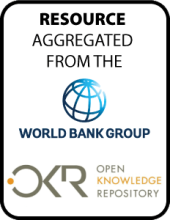Land Library
Welcome to the Land Portal Library. Explore our vast collection of open-access resources (over 74,000) including reports, journal articles, research papers, peer-reviewed publications, legal documents, videos and much more.
/ library resources
Showing items 154 through 162 of 4516.Use of conditional cash transfers has become widespread in development policy given their success in boosting health and education outcomes. Recently, conditional cash transfers are being used to promote pro-environmental behavior.
Agriculture in Uzbekistan is almost entirely dependent on irrigation.
The LPI has provided valuable
information for policy makers, traders, and other
stakeholders, including researchers and academics, on the
role of logistics for growth and the policies needed to
Large-scale agricultural land investments in Africa are often considered solely from the land perspective. Yet land, water and other natural resources are closely interlinked in agricultural production and in sustaining rural livelihoods.
This report presents the scope and findings of the Economic Sector Work on Sustainable Urban Transport for the City of Kyiv, financed jointly by the Energy Sector Management Assistance Program (ESMAP) and the Korea Green Growth Trust Fund (KGGTF).
Mali is a vast, land-locked country in
West Africa with a population of approximately 14.9 million,
and a GDP per capita of USD480. The economy is largely
rural, with over two-thirds of the population living off
This technical note discusses the
current status of banking supervision and regulation in
Montenegro in the context of select Basel Core Principles
(BCP). This note has been prepared as part of a Financial
Bhutan’s hydropower generation potential
raises the prospect of tremendous development opportunities
for the country: fast increasing export revenue, sustained
economic growth, and rapid poverty reduction. Driven by
This Systematic County Diagnostics is
organized into six parts. The first part presents a brief
overview of the country’s recent socio-political and
economic context. The second part examines the links between





